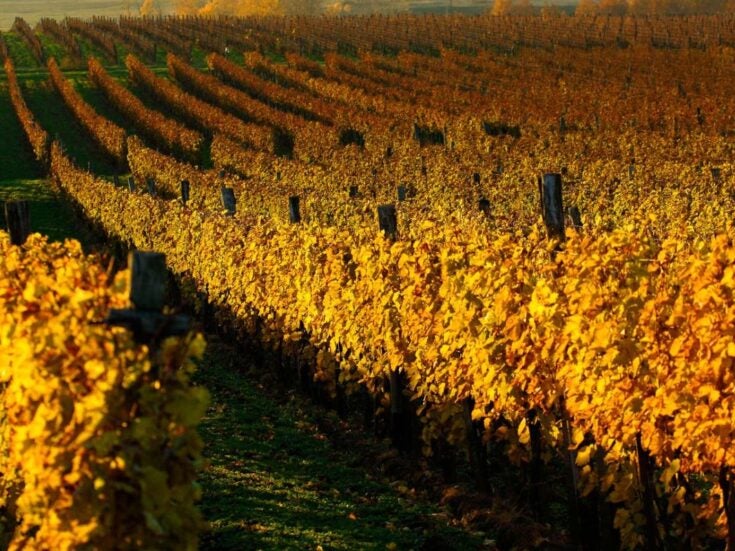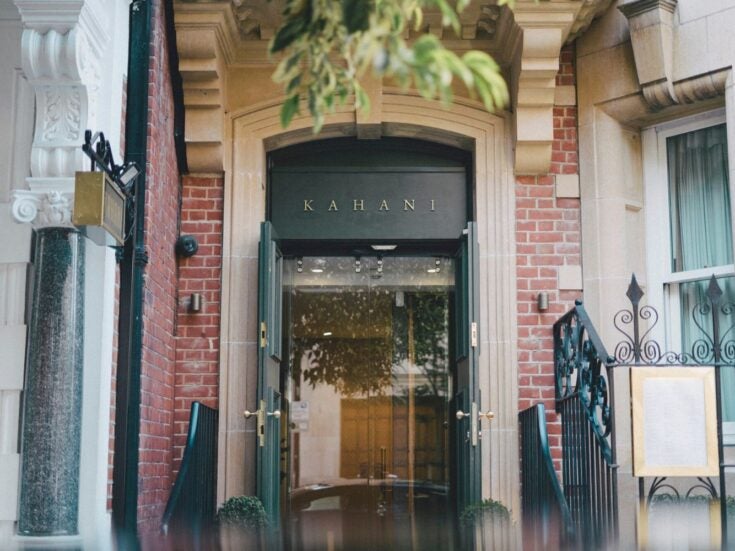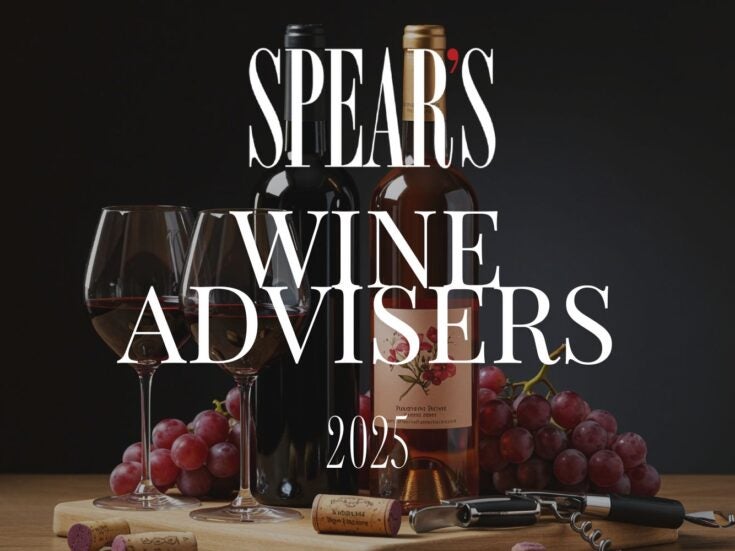The Rh’ne Valley, one of the world’s great wine regions, is criminally under-appreciated – says Jonathan Ray
It occurred to me the other day, staring at a virtually Rh’ne-free wine list in a restaurant that should know better, that despite being one of the great wine-growing regions of the world, the Rh’ne Valley is overlooked and neglected far too often.
It is neither as posh and swanky as Bordeaux, with its fancy-dan ch’teaux, manicured lawns and gently crunching gravel drives, nor as neurotic and single-minded as Burgundy, with its mono-varietal wines, fragmented vineyard ownership and overly complicated classification system.
On the face of it, the wines of the Rh’ne might seem complicated too, what with one major red (Ch’teauneuf-du-Pape) permitting thirteen different varieties in its blend (more than any other appellation in France) and another (C’te R’tie) allowing the white variety, Viognier, to be co-fermented with its major red component, Syrah.
But, in fact, the wines are hearteningly simple to follow and there is something for everyone. Among the wines of C’te R’tie, Hermitage, Crozes-Hermitage, St Joseph, Cornas, Saint-Peray, Gigondas, Vacqueyras, Ch’teauneuf-du-Pape, Lirac, Tavel, Condrieu and Beaumes de Venise there are fine sparklers, basic but gratifyingly reliable red blends, complex, dry whites, seriously grown-up ros’s, blockbusting yet fragrant serious reds and decadently seductive, fortified sweet wines.
Best of all, the Rh’ne Valley, home to the vine since Roman times, is a sanctuary for members of the ABC (Anything But Cabernet/Chardonnay) fraternity. Neither of these otherwise ubiquitous grapes dare show themselves round here, any more than Sauvignon Blanc or Merlot. This is the land of Grenache, Syrah and Mourv’dre for reds, and Roussanne, Marsanne and Viognier for whites.
There are many other grapes in supporting roles, of course, for in the Rh’ne, variety is definitely the spice of life.
’With the economic crisis, consumers have searched for value-for-money wines, and with Bordeaux or Burgundy being too expensive to enter this category, the Rh’ne has become a new Eden,’ reckons Michel Chapoutier (pictured), Rh’ne legend and outspoken proponent of the region’s wines.
‘Consumers can find affordable wines, as well as attractive fruit and concentration, while also discovering different levels of complexities through the diversity of the appellations. Exploring wines from the C’tes du Rh’ne up to the Crus has allowed them to satisfy their curiosity, this being particularly true in the UK market.’
Generally speaking, many more wines are made in the southern Rh’ne than in the north, but fewer great ones. In the north, the wines of C’te R’tie and Hermitage can command high prices, it’s true, but I reckon that wines of equivalent quality in Bord ‘n’ Burgwould be twice as much. Ditto with Ch’teauneuf in the south.
Barely 1 per cent of wines in the Rh’ne are white, but that 1 per cent represents something spectacular. Viognier is all the rage, and yet a few years ago the only place that grew it was Condrieu, where a few dedicated growers kept the flame alive, nurturing the variety and quietly making superlative wines. Viognier is now grown all over the world, albeit never so well or so distinctively as in theRh’ne Valley. Inevitably these wines are costly, but they are inimitable.
There are wines for both the canny investor and the canny drinker in the Rh’ne and we should seek them out. There are definite treasures to be found. As Fran’ois Perrin of Ch’teau de Beaucastel once told me, ‘The Rh’ne is full of great winemakers and terrible salesmen. We produce some of the best value wines in the world, and yet nobody seems to realise this.’
’
Six of the best Rh’nes
2011 C’te R’tie, Sereine Noire, Domaine Yves Gangloff
’80; Berry Bros & Rudd
This 100 per cent Syrah is harvested from the vineyards of the C’te Brune and C’te Blonde, sub-divisions of the C’te R’tie. Yves Gangloff has crafted a wine of exceptional depth and intensity here that is also refined and graceful. It is surprisingly floral on the nose, despite there being none of the permitted (white) headily aromatic Viognier in the blend. It’s still far too young, of course, but it already hints at the great beauty it will grow into.
2010 Gigondas, Domaine Grand Romane, Pierre Amadieu
’23.30; L’Art du Vin
Pierre Amadieu is the largest privately owned estate in Gigondas. The vines are planted 400 metres up in the foothills of the Dentelles mountains, where plenty of sun and cooler temperatures add freshness to the appellation’s main grape, the late-ripening Grenache. With old-vine Mourv’dre and Syrah in the mix here too, the wine is full of rich, dark, crunchy fruit and is deliciously soft and smooth on the finish.
2006 Hermitage Rouge, Domaine du Colombier
’47.95; Tanners
Domaine du Colombier is a family-owned estate based mainly in Crozes Hermitage but with a tiny holding in the eastern part of Hermitage itself, where the soils are lighter and more calcium-based. This unblended Syrah spends eighteen months maturing in barrels and is then bottled unfiltered. The result is a wine of great density and concentration, with dark fruit such as blackberries, blackcurrants and damsons and spice and creamy vanilla.
2012 Hermitage Blanc, M Chapoutier
’40.79; Handford Wines
One of the reasons I love the Rh’ne so much is the wines are quirky and individual. This beauty from Rh’ne hero Michel Chapoutier is made from unblended Marsanne (and when did you last fork out ’40 or even ’4 for a Marsanne?). Hand-picked grapes from three vineyards are vinified in oak to produce an organic and biodynamic white wine of real charm and character, full of quince, walnuts, ginger and honey.
2011 Ch’teauneuf-du-Pape, Clos des Papes, Paul Avril
’45.50; Goedhuis & Co
The Avril family has been making wine in Ch’teauneuf-du-Pape since the early 17th century and is one of the very few producers to include all thirteen of the appellation’s permitted varieties in its blend. The result is complex, with pepper and spice on nose and palate and oodles of ripe, juicy fruit and a long, long savoury finish. It’s a fantastic, big, bold wine — 15 per cent alcohol by volume, not that you’d know, so skilfully balanced is the blend.
2012 Condrieu, Coteau de Vernon, Domaine Georges Vernay
’85; Yapp Bros
This rare wine comes from one vineyard in the heart of Condrieu. Made from 100 per cent Viognier by Christine Vernay (Georges’s daughter), it is seen by many as the best Condrieu of all. With delicate aromas of wild flowers and white peaches and notes of figs, apricots and nuts on the palate, it is a glorious wine that can be drunk now or kept another twenty years, more than holding its own against the finest of white burgundies.
’
Jonathan Ray is drinks editor of The Spectator






